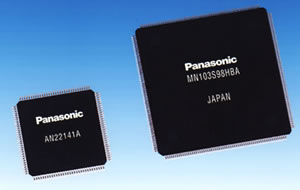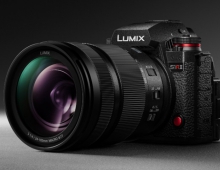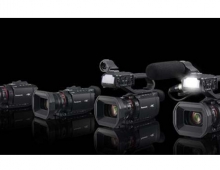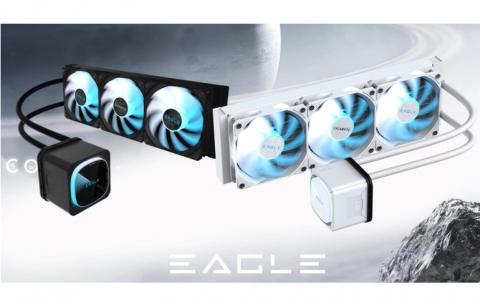
Panasonic Develops First Chipset for Multi-format Blu-Ray Drives
Panasonic today announced that it has developed the new chipset for disc drives to record and play Blu-ray Disc (BD), DVD-Multi (DVD-RAM, DVD-R, DVD-RW, and DVD-ROM), +R, +RW, and all CD formats.
So far chipsets for BD-R/BD-RE and DVD/CD were commercialized separately. However, the demand for a BD drive that is compatible with all BD/DVD/CD media formats requires implementation of of corresponding shipsets in hardware. Panasonic's chipset consists of two chips, and achieves the industry's highest record/play BD performance.
The company will start sample shipments in December 2005 and mass production in January 2006.
This chipset is in accordance with BD and DVD/CD standards, and consists of two chips: a front-end processor for analog processing such as servo control and laser power control, and a optical disc controller for signal processing as digital lead channel.

According to Panasonic, the chipset Can be easily applied to PC optical drives, which require compatibility with multiple media formats, by following the newest BD standards, including BD-ROM standards, and by making hybrid discs using conventional media. It also supports the "BD-ROM Mark" copyright protection technology recently introduced to the BD-ROM format.
It supports playback of BD-ROM, BD-R/RE at 4x, DVD-ROM, CD-ROM, DVD-RAM/-R/-RW and DVD+R/RW media. Recording is supported for all Blu-Ray formats (BD-R/RE), DVD-RAM/R/RW , DVD+R/RW, and CD-R/RW media. The 4x reading/writing capabilities demand highly accurate write strategy technology and high-speed signal processing technology (DSP), provided by Panasonic. Note that 4x 4x (19 MBytes/sec) recording for BD corresponds to approximately 5.7x for DVD. This means that 25Gb of data will be recorded in less than 9 minutes. Considering that the theoritical physical limit for Blu-Ray recording is the 12x speed due to the maximum allowed rotation speed of the disc (10800rpm), we should expect higher recording speeds in the future, using different writing strategies and of course, different media.
The new chipsets support either ATAPI or Serial-ATA interfaces, allowing easy implementation in PC drives.
The company will start sample shipments in December 2005 and mass production in January 2006.
This chipset is in accordance with BD and DVD/CD standards, and consists of two chips: a front-end processor for analog processing such as servo control and laser power control, and a optical disc controller for signal processing as digital lead channel.

According to Panasonic, the chipset Can be easily applied to PC optical drives, which require compatibility with multiple media formats, by following the newest BD standards, including BD-ROM standards, and by making hybrid discs using conventional media. It also supports the "BD-ROM Mark" copyright protection technology recently introduced to the BD-ROM format.
It supports playback of BD-ROM, BD-R/RE at 4x, DVD-ROM, CD-ROM, DVD-RAM/-R/-RW and DVD+R/RW media. Recording is supported for all Blu-Ray formats (BD-R/RE), DVD-RAM/R/RW , DVD+R/RW, and CD-R/RW media. The 4x reading/writing capabilities demand highly accurate write strategy technology and high-speed signal processing technology (DSP), provided by Panasonic. Note that 4x 4x (19 MBytes/sec) recording for BD corresponds to approximately 5.7x for DVD. This means that 25Gb of data will be recorded in less than 9 minutes. Considering that the theoritical physical limit for Blu-Ray recording is the 12x speed due to the maximum allowed rotation speed of the disc (10800rpm), we should expect higher recording speeds in the future, using different writing strategies and of course, different media.
The new chipsets support either ATAPI or Serial-ATA interfaces, allowing easy implementation in PC drives.





















